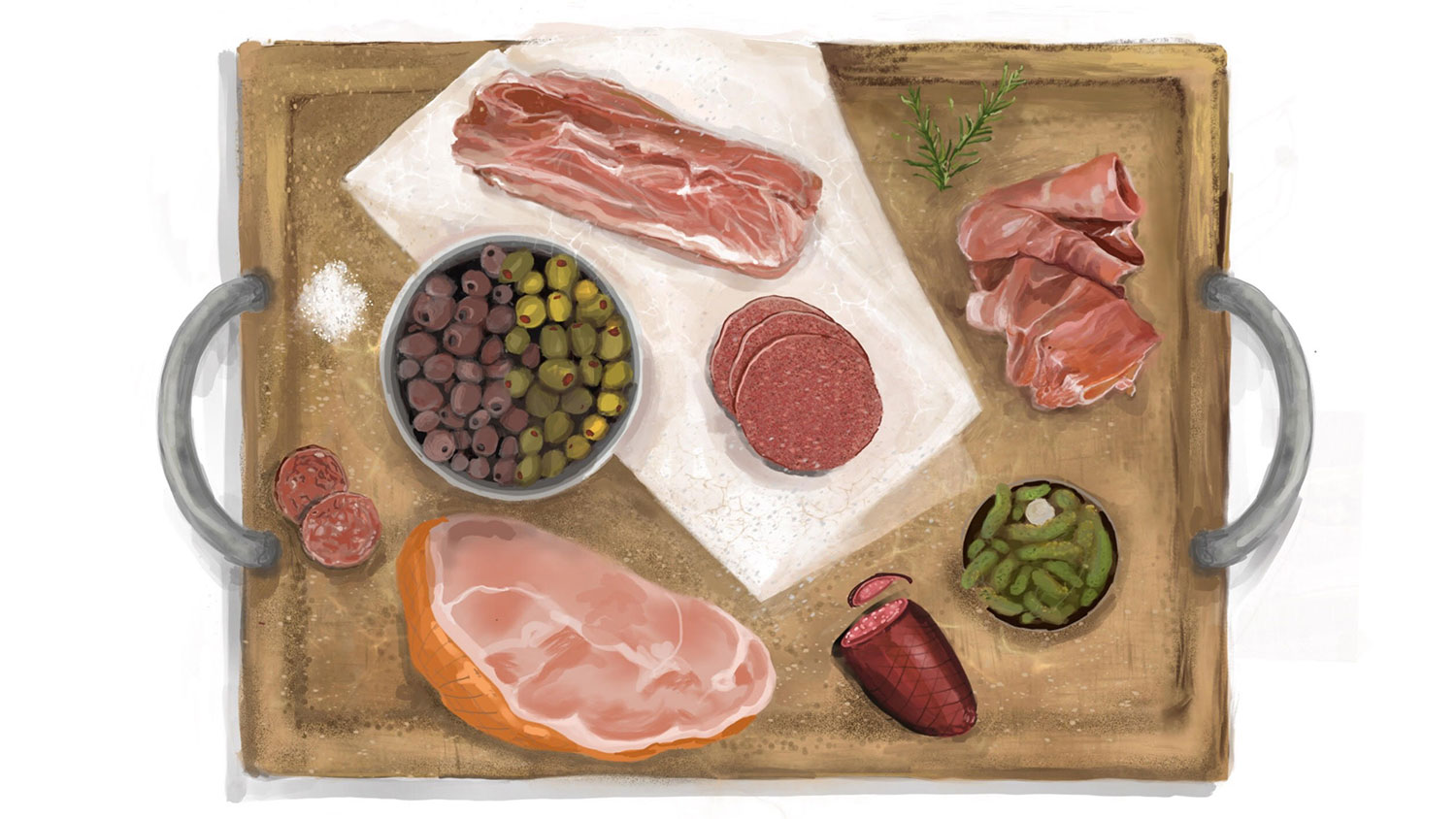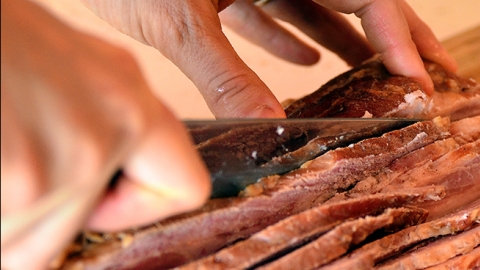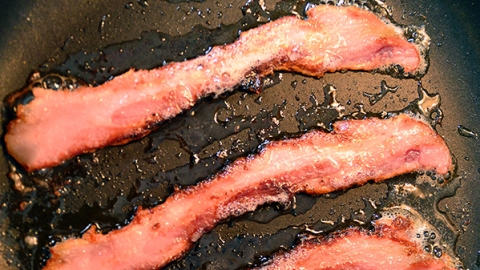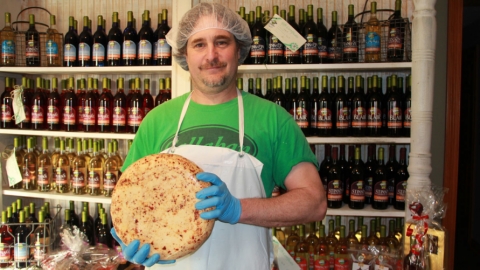Can’t rush the distinctive flavor of bacon and other cured meats
My symptoms surface gradually over several weeks. I am restless, snarling at the refrigerator, and my stomach is growling during breakfast commercials. Eventually my inner physician pinpoints the diagnosis.
Bacon deficiency.
There is almost always bacon in our refrigerator or freezer, consumed in small quantities and savored, every so often, like cherry cordial. Somehow, it had slipped off my grocery list.
Bacon is one type of cured meat, that delicious family of food that includes pork chops, ham, smoked sausage, prosciutto, salami and hot dogs.
There are other prepared meat products that are not cured, particularly fresh sausages and brats. They come in a dizzying array of flavors, but they are not cured.
Cured meats have a distinctive flavor, thanks to chemical changes during the curing process and the tick of the clock. You can’t fire up a grill and present a slab of bacon 15 minutes later. Cured meats take time.
Meat products can be cured several ways—dry rub, wet cure, dry cure and some variations of these methods.
A dry rub is usually used to cure bacon. Dry rubs contain a combination of salt, sugar and a curing agent. To make bacon, you rub this combo into a raw, trimmed cut of pork belly.
One curing agent is sodium nitrate. The USDA allows products cured with sodium nitrate to be labeled “Cured.” If a seemingly cured product is labeled “Uncured,” that means it was cured with nitrates that naturally occur in many root vegetables. The most commonly used of these is celery root powder.
The words “Cured” or “Uncured” on a label both indicate that nitrates were used in the curing process (yes, it’s confusing). One type of nitrate is not necessarily better or healthier than the other. Food police, meat processors and artisans debate this issue on a regular basis, probably over lunch.
After you apply the dry rub, bacon should be chilled for several days. Then you rinse off the rub and hang the meat in a smokehouse for about four hours, to lend that classic smoky flavor. Hello, saliva!
Once the bacon leaves the smoker, you should chill it again so it stays firm for easy slicing. It should remain refrigerated to prevent spoilage. When you bring home the bacon, you must cook it before you eat it.
Stephanie Gunter of DC Meats in Osceola, IN, says that their three on-site smokehouses allow them to meet the demand for their cured smoked meats, which she hand-rubs herself and monitors for product safety, following strict guidelines and time-honored techniques her family has practiced for generations. Gunter says, “I want everybody to be happy. I want everybody to be safe.”
The second type of cure is a wet cure, often used for whole hams or pork chops. For this type of cure, you inject a liquid curing agent (a liquid version of the dry rub used for bacon) into the meat, soak it in a salt brine, then smoke it for 18 hours. After smoking, the meat is fully cooked and ready to eat, but it should be refrigerated until you are ready to serve it.
Drier’s Meat Market in Three Oaks, MI, cures and smokes hams in a century-old smokehouse. Same with their famous ring bologna, bacon and hard salami. Dave Wooley, fourth-generation family member at the shop, says their smokehouse runs 11 months out of the year. “Our Decembers are just too busy with all the shipping we do for Christmas.”
The third type is a dry cure, which refers to the traditional “old world” European method, perfected through generations of artisans, of curing linked delicacies or whole muscles. Dry-cured meats are totally preserved and are safe to eat without cooking.
For example, to make salami, you grind beef or pork and combine it with curing salt, spices, flavorings, live starter culture and sugar. Then you stuff the meat into casings and hang them for two to three days in a smoker, where the fermentation process begins. During this period, the starter culture, or “good” bacteria, multiplies and the “bad” bacteria die out. This process cures the meat and adds a funky, tangy flavor. After this step, you move the meat to a cave or fermentation room kept at 50 to 60° Fahrenheit with about 80 to 90% humidity for five to 10 weeks—or sometimes for a year or more.
Gunthorp Farms in LaGrange, IN, has just finished building a meat cave to dry-cure its own charcuterie. This fall they will hang their first dry-cured hams. They will age the meat for a minimum of 12 to 14 months, some for up to three years.
While these methods of curing appear complex, our area artisans, meat producers, delis and butcher shops know how to keep it simple. Knowledgeable and proud of the offerings in their shops, they can help you enjoy the world of charcuterie, whether it’s the aged salami, bresaola or mortadella, or the tasty star of my BLT, bacon.
Where to find cured meats in Michiana
Bourbon & Butcher at Corndance Tavern
4725 Grape Rd., Mishawaka, IN
corndance.com/bourbon-butcher
DC Meats
1711 Lincolnway W., Osceola, IN
dcmeats.net
Drier’s Meat Market
14 S. Elm St., Three Oaks, MI
driers.com
Greenbush Annex
5870 Sawyer Rd., Sawyer, MI
greenbushbrewing.com/the-annex
Gunthorp Farms
LaGrange, IN
gunthorpfarms.com
Jake’s Country Meats
5721 Decatur Rd., Cassopolis, MI
jakescountrymeats.com
Martin’s Custom Butchering & Meats
27570 CR 42, Wakarusa, IN
martinsbutchering.com
Oh Mamma’s Cheese Shop & Deli
1202 Mishawaka Ave., South Bend
Find on Facebook
Peasant’s Pantry
12856 Red Arrow Hwy., Sawyer, MI
thepeasantspantry.com










